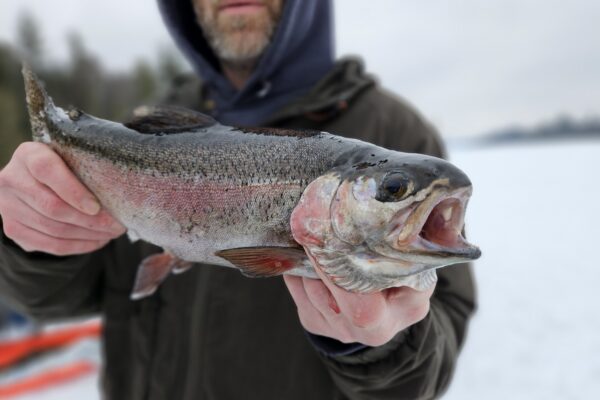Northeast Minnesota grouse hunters experience average season following impacts of June flooding on chick survival
Following several good years for ruffed grouse populations, recent observations from hunters and the Minnesota Department of Natural Resources (DNR) indicate that grouse populations have now leveled off in the northeast Minnesota region.
“Grouse hunting this year has been average,” said Bailey Petersen, Minnesota DNR Assistant Area Wildlife Manager based in Two Harbors, Minn. “Hunters are seeing mostly adult birds that carried over from the high population we saw after a very successful hatch last year.”
The northeast region of Minnesota is the core of the ruffed grouse range. In April and May, the DNR conducted the annual spring drumming count to assess ruffed grouse populations. The population survey showed that the northeast region saw a 10% increase from the 2023 spring drumming survey.
However, DNR officials said the flooding that followed soon after in June impacted the survivability of nesting chicks.
“In areas where there’s been these heavy rainfalls when the chicks are young. In those areas, I think, probably, we’re going to see a lot fewer young birds than we would expect,” Charlotte Roy, the Minnesota DNR grouse project leader, told WTIP in July.
The heavy rains and flooding conditions in isolated areas may have washed out nests and the loss of broods. “So we might not see as many young birds in the fall,” Roy said.
Roy’s mid-summer prediction is on par with what grouse hunters and Peterson are experiencing in the field.
“As predicted, we did not have as good of brood rearing conditions this year, so brood sizes and success varied greatly across the northland depending on where the poorly timed heavy rains fell and the cool nights,” Peterson said.
Grouse hunters in Cook County and across the northeast region are seeing this firsthand, according to recent DNR conservation officer reports.
Conservation Officer Hudson Ledeen, who covers the Hovland and east end of Cook County, said, “Most hunters checked had a grouse or two, but many hunters noted the lack of grouse compared to the past few years.”
Conservation officer Trent Anderson, based near Tofte, shared a similar report, “Area hunters continue to note lower-than-expected grouse numbers with few young birds being seen.”
Grouse hunters in other areas of the northeast region are seeing the same thing. Babbitt-based conservation officer Anthony Bermel reports grouse hunters are seeing moderate success, and hunters are seeing “very few young-of-the-year birds.”
Despite the moderate success and lack of young birds, many hunters will continue to try their luck this fall. The ruffed and spruce grouse hunting season remains open until Jan. 1., 2025.














